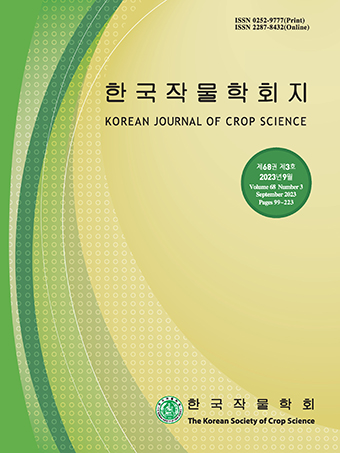Original Research Article
Abstract
References
Information
- Publisher :The Korean Society of Crop Science
- Publisher(Ko) :한국작물학회
- Journal Title :The Korean Journal of Crop Science
- Journal Title(Ko) :한국작물학회지
- Volume : 64
- No :2
- Pages :137-143
- Received Date : 2019-04-11
- Revised Date : 2019-06-11
- Accepted Date : 2019-06-20
- DOI :https://doi.org/10.7740/kjcs.2019.64.2.137



 The Korean Journal of Crop Science
The Korean Journal of Crop Science







